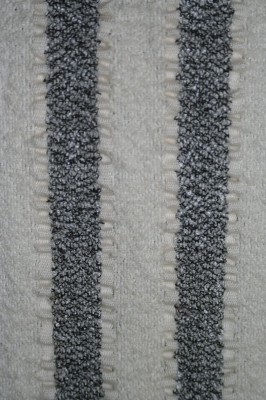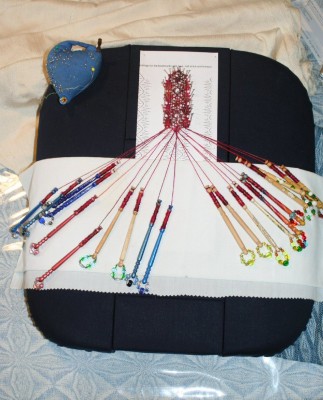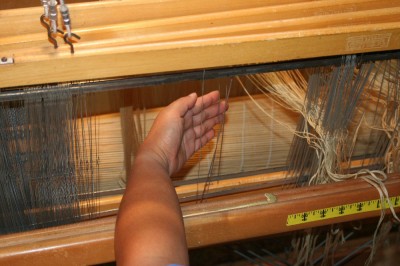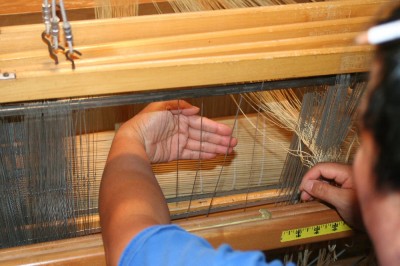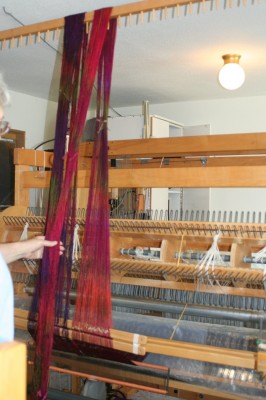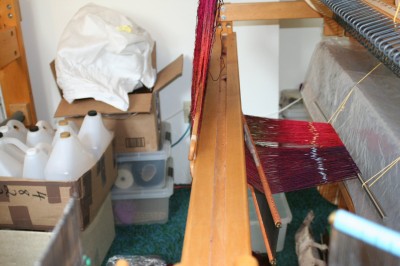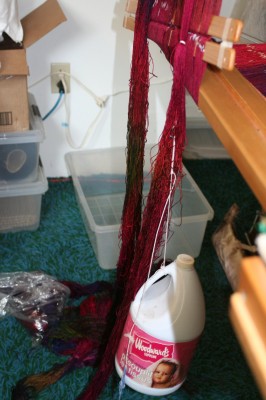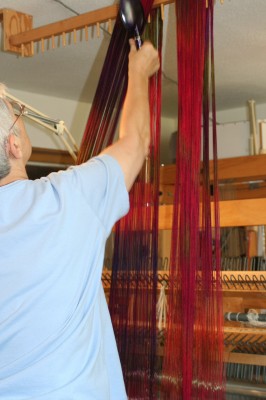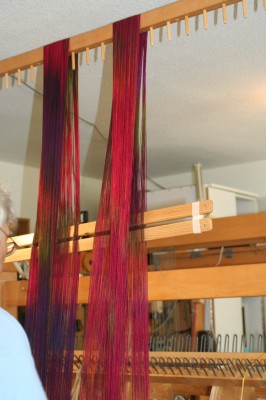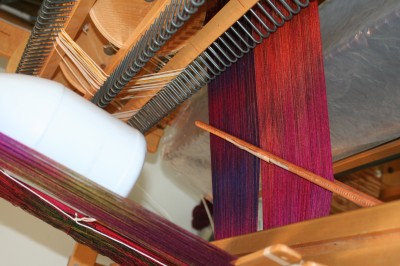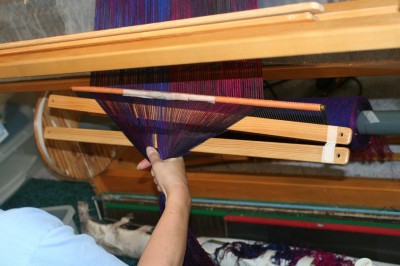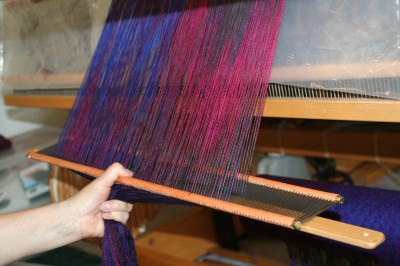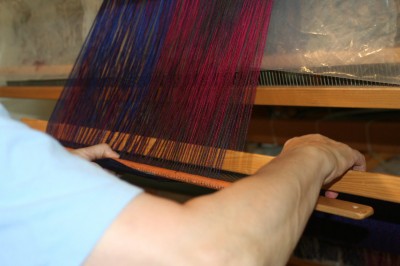A recap of the last five days:
two 5-yard warps for tea towels:
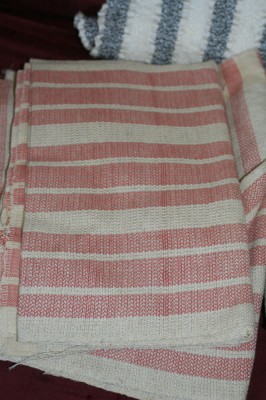
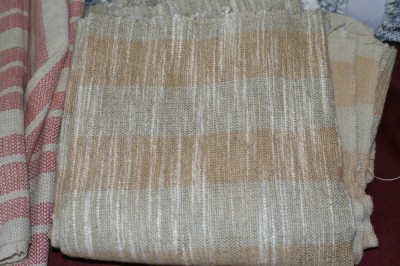
A 5-yard warp’s worth of collapse weave samples (now neatly indexed and ready to go into binders):

A shawl from the collapse weave sample I liked best:
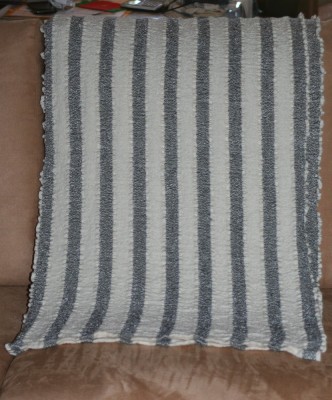
And learned to make bobbin lace, producing three bookmarks (my first one not shown because I left it behind in Canada; Laura’s mailing it back to me)
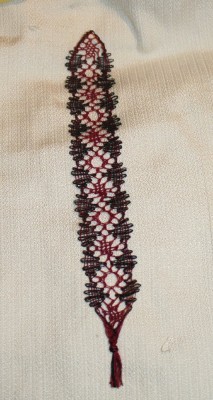
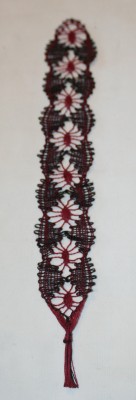
Not bad for 5 days!
And now I’m home, re-energized, refreshed, and ready to go!
(By the way, if you are interested in studying with Laura in her studio, it’s only $100/day with hotel, or $125/day if you stay at Laura’s. If I were you I’d jump on it! Her contact info is on her website at http://www.laurafry.com .)
